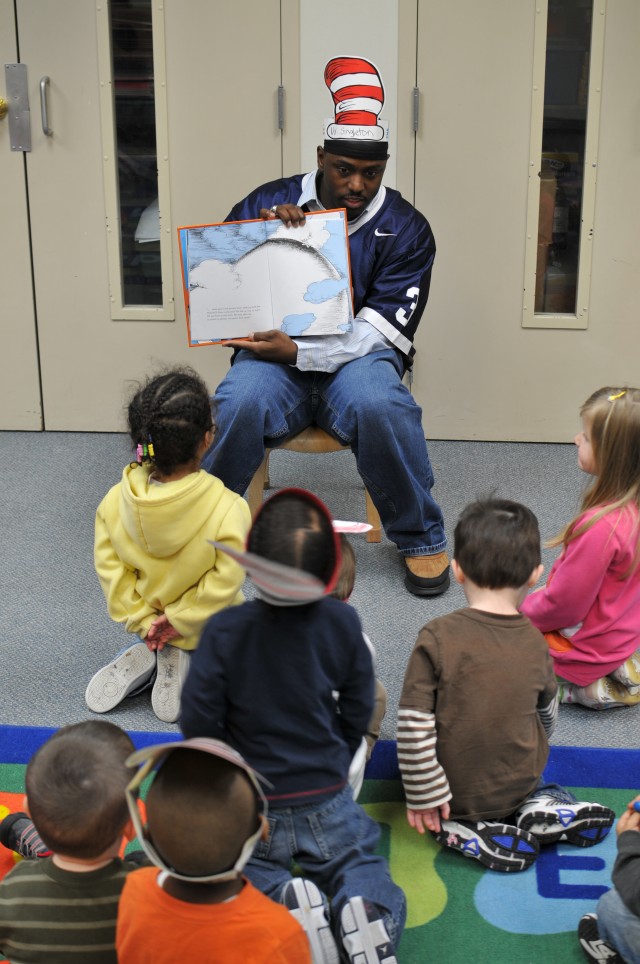
FORT WAINWRIGHT, Alaska - Most of us are familiar with Dr. Seuss, that famous illustrator and children's book author whose publications include "The Cat in the Hat," "One Fish Two Fish," "There's a Wocket in my Pocket" and many more, which are read over and over to little children and held in high regard by kids and adults alike. Last week the National Education Association's annual Read Across America celebration promoted the joy of reading and with it celebrated the 107th birthday anniversary of Theodor Seuss Geisel, otherwise known as Dr. Seuss. Though honored for his contributions to children's literature, his service to the nation as a member of the U. S. Army has gone virtually without notice.
According to the Mandeville Special Collections Library, University of California, San Diego, Geisel was born March 2, 1904, in Springfield, Mass.
Theodor Geisel started his path to writing after graduating from Dartmouth College in 1925. He studied literature at Oxford University in England, but left without finishing his degree and came back to America to pursue a career as an artist and writer.
Returning to Springfield in 1927, he begin sending his illustrated political cartoons to magazines and other publications, making his first breakthrough with The Saturday Evening Post's July 16, 1927, issue.
Moving to New York City, he joined the staff of a weekly humor magazine called "Judge," where he first used his now-famous pen name.
In 1936, after successfully making a living in advertising and as a political cartoonist, Geisel authored his first children's book, "And to Think That I Saw It on Mulberry Street." Geisel went to 27 different publishers with his first book, rejected by all until it was finally accepted by the Vanguard Press which published it in 1937.
After the start of World War II, Dr. Seuss joined the war effort by creating cartoons, illustrations and posters for the U.S. Treasury and other agencies, bringing attention to in the war effort by promoting the purchase of war bonds, rationing of goods needed by Soldiers overseas and eventually marketing enlistment posters for the Department of Defense.
Too old for the draft, Geisel volunteered for service, joined the Army in 1943 and was commissioned as Commander, Capt. Theodor Geisel of the Animation Department, First Motion Picture unit, based in Hollywood, Calif. His role during the war was to create informational training films and illustrations for the military and public. Working with famous cartoonists and filmmakers of the day, including Jack Turner, Chuck Jones and Frank Capra, his unit created films for Army training, morale and information. They included "Private Snafu," a series of short animated films featuring a private who continually messes up to show troops what not to do while in the Army; "Your Job in Germany," a 1945 propaganda film on the role of peace in Europe after World War II, and "Our Job in Japan." One of the films he created for the Army, "Hitler Lives," won an Academy Award. As a Soldier in the Army, he was awarded the Legion of Merit for his contributions to the war efforts as a cartoonist, scriptwriter and filmmaker, according to the Internet Movie Database.
At the end of the war, Geisel left the Army and moved to La Jolla, Calif., where he created the script for "Gerald McBoing-Boing," a Technicolor short by United Productions of America / Columbia, which won a 1951 Oscar for Best Cartoon Short.
During his career he published many books, writing and illustrating 44 in total himself. One book was supposedly written on a bet with his publisher, Bennett Cerf, who prompted him to write a book using only 50 words. How many of us haven't heard of "Green Eggs and Ham'"
Probably his best known and all-time biggest seller was "Cat in the Hat." His final book "Oh, the Places You'll Go!" was published in 1990 and offered encouragement to young people as they set out on the journey of life.
Geisel died Sept. 24, 1991, in La Jolla, Calif., but his writing style, signature artwork and contributions to the nation have made him an enduring part of American culture in the homes, libraries and theaters all over the world.
Would you, could you read some more
Of his service during war'
Read it, read it then you'll see
How Dr. Seuss served in the Army.
Read more on Dr. Seuss, his life and accomplishments at:
http://www.militarymuseum.org/1stmpu.html
http://orpheus.ucsd.edu/speccoll/dspolitic/
http://signal150.army.mil/theodor_seuss_geisel.html
http://orpheus.ucsd.edu/speccoll/testing/html/mss0230a.html#menu

Social Sharing